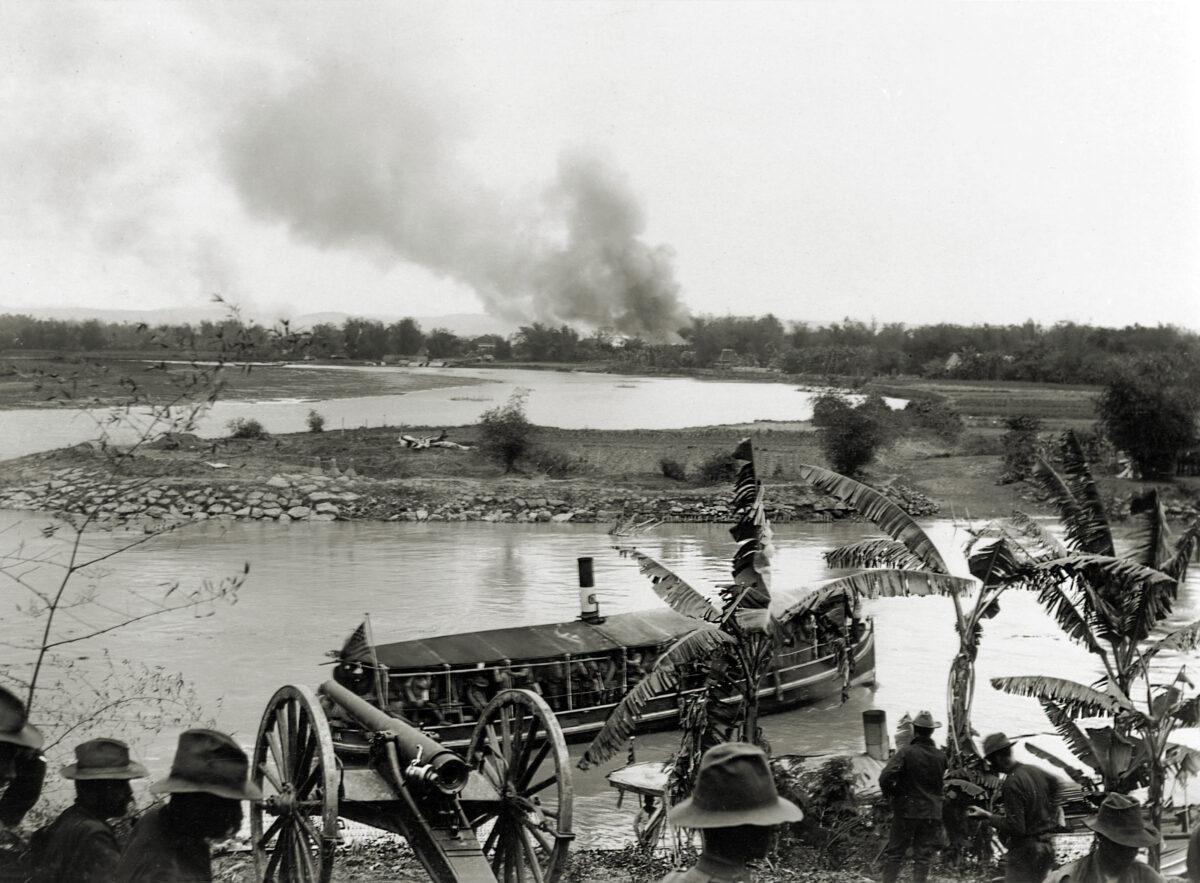At first glance this scene, featuring U.S. soldiers supporting a gunboat along a tropical southeast Asian river, almost looks like it could have happened in the Vietnam War. Yet this guerilla war in a former European colony was fought over 60 years earlier. It was the 1899-1902 Philippine-American War.
Two years before the start of the Spanish-American War in 1898, the Philippine Revolution had begun against Spanish rule, and the revolutionaries were losing. Led in exile by Generalissimo Emiliano Aguinaldo, Philippine revolutionaries were all but defeated when the U.S. fleet arrived with a proposition. Aguinaldo agreed to an alliance with the Americans with (according to him) a handshake agreement to support Philippine independence after the war was won.
Between American naval firepower and the popular support Aguinaldo could rally, the Spanish were quickly ousted. Aguinaldo not only declared victory: he declared independence, with a formal declaration modeled on our own (though it also gave him dictatorial powers to transition the Philippines to a constitutional republic). The celebrations of the new First Philippine Republic would be short-lived, though.
Behind Aguinaldo’s back, Dewey had agreed with his Spanish counterpart to secure a surrender of Spanish forces to the Americans, and even orchestrated a mock battle to sell it. At the Treaty of Paris in December, the United States paid $20 million to gain sovereignty of the Philippines.
Aguinaldo’s regime was declared illegitimate as U.S. military governors stepped in. Infuriated, the nascent Philippine Republican army was quickly crushed, and Aguinaldo went into hiding on Luzon to lead a guerilla war against the American forces. Ironically, it would be Gen. Arthur MacArthur, Jr., father of Douglas MacArthur, who would attack Luzon to flush out the first ever president (though unelected) of an Asian democracy. Though Aguinaldo surrendered in 1901, the guerilla fighting would continue on various islands for several years.
Many Americans at home were shocked by the imperialist takeover of the Philippines, as well as reports of atrocities carried out throughout the war. As time passed, though, Americans almost forgot that the Philippines were a U.S. territory. When Japan occupied the Philippines during World War II, though, it became personal for those who remembered, like Gen. Douglas MacArthur. Aguinaldo, for his part, collaborated with the Japanese throughout the war, though he claimed later it was against his will.
During the war, the U.S. soldiers rescuing the islands from the Japanese were consistently shocked to find that the children spoke perfect English, as that was the language of instruction in schools. Due to the deaths of at least half a million Filipino U.S. Nationals, World War II was actually the most deadly war in American history, and not the U.S. Civil War.
The forgotten Americans of the Philippines finally achieved independence in 1946.
historynet magazines
Our 9 best-selling history titles feature in-depth storytelling and iconic imagery to engage and inform on the people, the wars, and the events that shaped America and the world.


